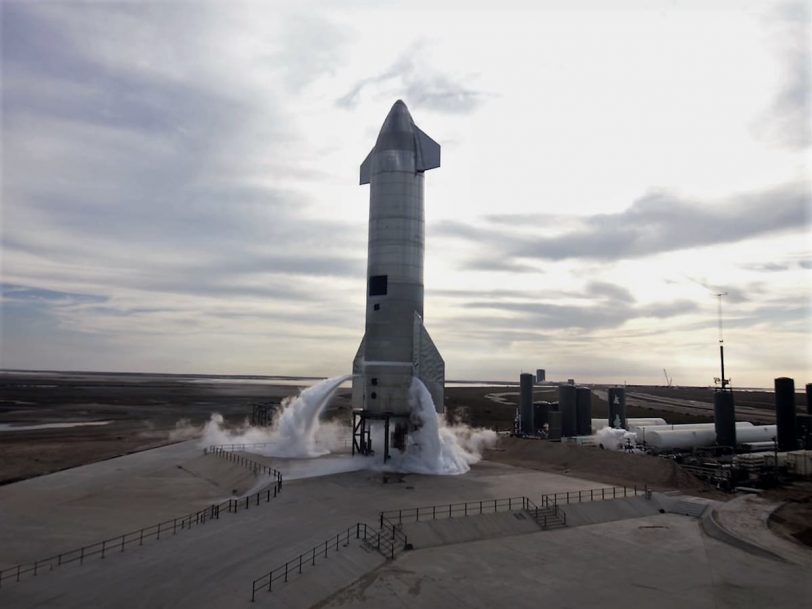The Starship SN11 prototype joined SpaceX’s previous three prototypes in rocket heaven on Tuesday.
The uncrewed launch of SN11, Elon Musk’s next-generation rocket, took place on Tuesday at 8 a.m. local time (6 a.m. PT) from the Starship development facility in Boca Chica, Texas, despite heavy fog and no real visibility.
It fired up its three Raptor engines and flew up to about six miles in the air (10 km). Onboard cameras captured SN11 flapping its flaps above the cloud bank, with a blue sky background, for a brief moment before it began its descent. As the Raptors re-ignited for landing, the SpaceX cameras froze up, and with the fog on the ground, it’s impossible to tell exactly what happened, except that SN11 definitely exploded.
SpaceX commentator John Insprucker referred to it as “another exciting” test. “We do appear to have lost all data from the vehicle,” he said.
It’s not clear if SN11 crash-landed, exploded in the air or perhaps the flight termination system was activated to destroy the vehicle before it hit the ground.
“At least the crater is in the right place,” Elon Musk tweeted shortly afterward. “Something significant happened shortly after landing burn start. Should know what it was once we examine the bits later today.”
The first two prototypes, the SN8 and SN9, both exploded spectacularly as they hit the pad at high speeds. On March 3, the follow-up, SN10, touched down safely at the Boca Chica facility, but about six minutes later it underwent a “rapid unscheduled disassembly” — a massive explosion. According to Musk, the speed with which SN10 hit the pad crushed its landing legs and part of the skirt. And so, farewell.
SN11 had a similar fate. We’re waiting for more details from SpaceX on what happened.
The Spaceship is being designed to carry humanity across the moon and all the way to Mars, but there’s still a long way to go before such dreams become a reality.
Starting with SN15, the next batch of spacecraft will be improved versions of current prototypes. The Starship is actually one “half” of a spacecraft that would be able to travel farther into space. A prototype for the first booster it will sit atop, known as the Super Heavy, is also being constructed at Boca Chica.
No products found.


